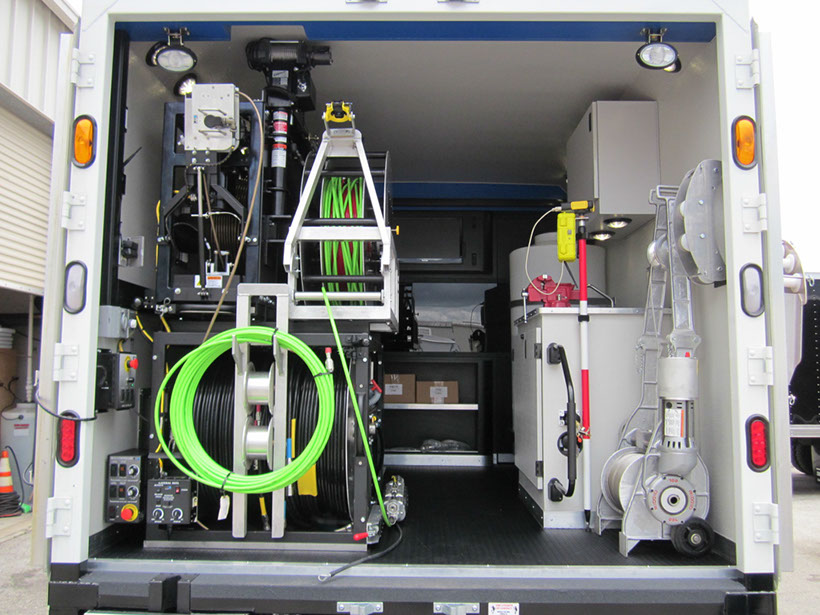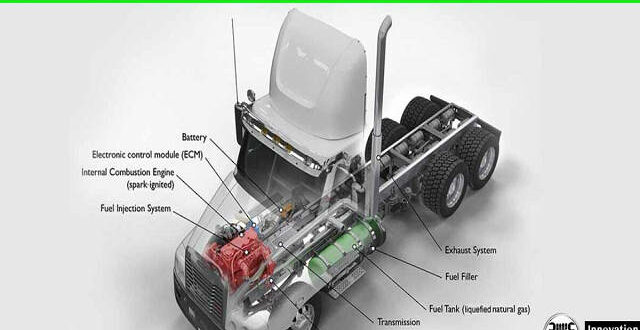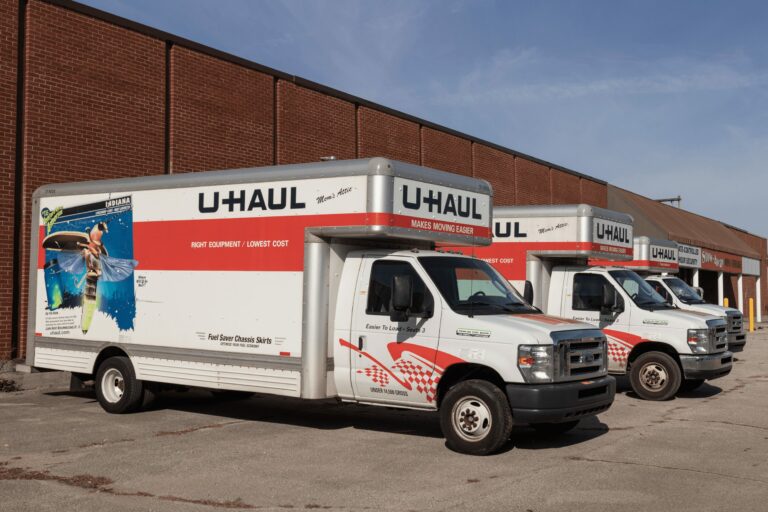Used CCTV Sewer Inspection Trucks For Sale: A Comprehensive Buyer’s Guide
Used CCTV Sewer Inspection Trucks For Sale: A Comprehensive Buyer’s Guide cars.truckstrend.com
Introduction: Unearthing Value in Pre-Owned Inspection Powerhouses
In the critical realm of infrastructure maintenance, few tools are as indispensable as the CCTV sewer inspection truck. These specialized vehicles, equipped with sophisticated camera systems, allow municipalities, utility companies, and private contractors to peer into the hidden world of underground pipelines. They diagnose blockages, identify structural damage, locate infiltrations, and ensure the integrity of vital wastewater and stormwater systems without disruptive excavation. The high cost of new equipment, however, often places it beyond the reach of many businesses, especially startups or those looking to expand their fleet on a budget. This is where the market for used CCTV sewer inspection trucks for sale becomes incredibly relevant.
Used CCTV Sewer Inspection Trucks For Sale: A Comprehensive Buyer’s Guide
Opting for a pre-owned truck can offer a significant cost advantage, providing access to essential technology and robust capabilities at a fraction of the price of a new unit. This article serves as a comprehensive guide for anyone considering such an investment, delving into the benefits, key components, crucial considerations, and practical advice for navigating the used market successfully.
Why Consider a Used CCTV Sewer Inspection Truck?
The decision to purchase a used sewer inspection truck is often driven by compelling economic and operational advantages:
- Cost-Effectiveness: This is arguably the primary benefit. A well-maintained used truck can cost anywhere from 30% to 70% less than a brand-new equivalent, freeing up capital for other business investments or operational expenses.
- Immediate Availability: Unlike new trucks that may have long lead times for manufacturing and customization, used trucks are typically available for immediate purchase and deployment, allowing businesses to respond quickly to market demand or project needs.
- Proven Technology: Many used trucks feature robust, time-tested camera and control systems that have proven their reliability in the field. While not always cutting-edge, these systems often perform their core functions exceptionally well.
- Reduced Depreciation: New vehicles experience significant depreciation the moment they drive off the lot. Used trucks have already undergone their steepest depreciation curve, meaning your investment retains its value better over time.
- Environmental Impact: Buying used is a sustainable choice, extending the lifecycle of existing equipment and reducing the demand for new manufacturing, thereby lowering the environmental footprint.
- Ideal for Startups or Expansion: For new businesses entering the sewer inspection market, a used truck provides an affordable entry point. For established companies, it offers a cost-effective way to expand capacity without a massive capital outlay.

Key Components of a CCTV Sewer Inspection Truck
Understanding what goes into these complex vehicles is crucial for evaluating a used unit. Each component plays a vital role in the truck’s overall functionality:
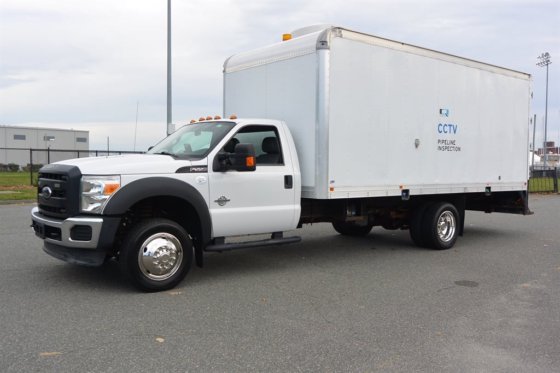
1. The Truck Chassis
This is the foundation of the unit. Common types include cutaway vans, box trucks, or custom-built chassis. When evaluating, consider:
- Condition: Rust, frame integrity, tire wear, brake condition.
- Mileage & Hours: High mileage on the truck and high hours on the equipment often indicate significant use.
- Engine & Transmission: Look for signs of proper maintenance, fluid leaks, or unusual noises.
- Payload Capacity: Ensure the chassis can safely support the weight of the inspection equipment, operator, and any additional tools.
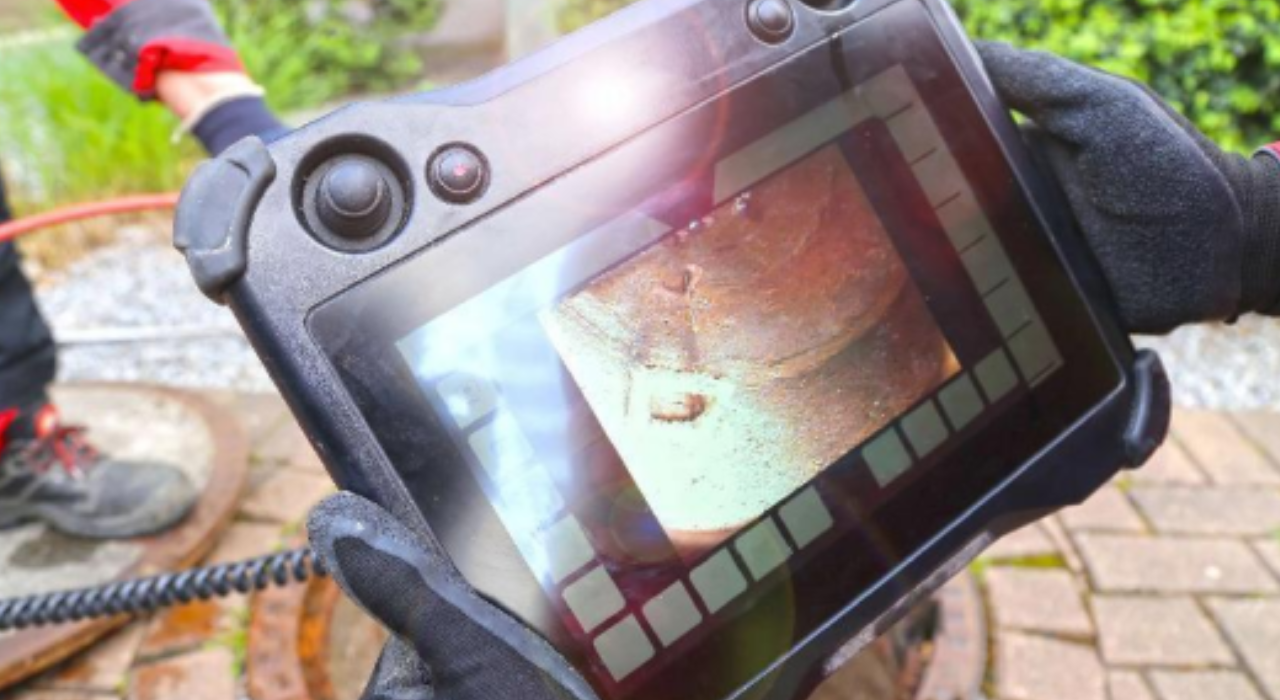
2. CCTV Camera Systems
The heart of the inspection process. There are generally two types:
- Push Cameras: Smaller, flexible cameras pushed manually or with a reel, ideal for residential lines, laterals, and smaller diameter pipes (typically 2-6 inches).
- Crawler Cameras: Robotic, self-propelled units designed for larger main lines (typically 6-60+ inches). They feature:
- Pan-and-Tilt Functionality: Allows the camera head to rotate and tilt for comprehensive viewing.
- Zoom Capability: Essential for detailed inspection of defects.
- Integrated Lighting: High-intensity LEDs illuminate dark pipes.
- Self-Leveling: Keeps the image upright regardless of camera orientation.
- Sonar/Laser Profiling (Advanced): Some high-end systems include these for pipe mapping and defect measurement.
3. Control Unit & Monitoring Station
This is the operator’s command center, typically located within the truck’s climate-controlled compartment. Key elements include:
- High-Resolution Monitors: For viewing live video feed.
- Recording Devices (DVR/NVR): For capturing video and still images. Ensure they are functional and store data reliably.
- Control Joysticks/Panels: For maneuvering the camera crawler, adjusting lights, and operating pan-and-tilt functions.
- Reporting Software: For generating professional inspection reports, annotating findings, and managing data. Check for software compatibility and licensing.
4. Cable Reels
These house the multi-conductor cable that transmits video, power, and control signals to the camera.
- Manual vs. Automatic: Automatic reels offer greater convenience and control.
- Cable Length: Varies significantly (e.g., 500-1500 feet or more) depending on the intended application.
- Condition: Inspect for frays, kinks, or damage that could compromise signal integrity.
5. Power Source
Most trucks require a dedicated power source for the inspection equipment.
- Generators: Typically gasoline or diesel, mounted on the truck. Check run hours and maintenance.
- Inverters/Battery Banks: Less common as primary power for full inspection systems but may supplement.
6. Ancillary Equipment
Depending on the truck’s setup, it might include:
- Pressure Washers: For cleaning pipes before inspection.
- Robotic Cutters: For removing roots or other obstructions (integrated into high-end units).
- Work Lights, Safety Features: Essential for safe operation.
What to Look For When Buying a Used Truck: Important Considerations
Purchasing a used CCTV sewer inspection truck requires meticulous attention to detail. Hasty decisions can lead to costly regrets.
-
Overall Condition of the Truck Chassis:
- Rust and Corrosion: Pay close attention to the frame, undercarriage, and body, especially in regions with harsh winters or coastal environments.
- Engine & Transmission Health: Get a pre-purchase inspection from an independent mechanic specializing in heavy-duty vehicles. Check for service records, fluid leaks, and unusual noises.
- Tires, Brakes, Suspension: Ensure these critical safety components are in good working order.
-
Condition and Functionality of the CCTV System:
- Camera Optics: Inspect the camera lens for scratches, cracks, or fogging. Test pan-and-tilt, zoom, and focus functions thoroughly.
- Lighting: Ensure all integrated lights are working and bright enough.
- Cable Integrity: Look for any visible damage to the cable. A damaged cable can cause intermittent signals or complete failure.
- Control Unit Responsiveness: Test all buttons, joysticks, and software interfaces. Ensure monitors are clear and bright.
- Recording Quality: Record a test video and review it for clarity, dropped frames, or audio issues (if applicable).
- Software Compatibility & Updates: Verify that the inspection software is functional, licensed, and ideally, capable of updates or compatible with common reporting standards (e.g., PACP).
-
Maintenance Records and History:
- Comprehensive Records: Request detailed maintenance logs for both the truck and the inspection equipment. This provides insight into how well the previous owner cared for the unit.
- Hours of Operation: Beyond truck mileage, inquire about the operating hours of the CCTV equipment itself. High hours can indicate significant wear on cameras and reels.
- Reason for Sale: Understanding why the current owner is selling can provide valuable context (e.g., upgrading, liquidating, business closure).
-
Reputation of the Seller:
- Reputable Dealers: Specialized equipment dealers often offer refurbished units, limited warranties, and post-sale support.
- Private Sellers: May offer lower prices but come with higher risk and less recourse if issues arise.
- Auctions: Can offer great deals but are often "as-is, where-is" with no warranties. Thorough inspection before bidding is paramount.
-
On-Site Inspection and Testing:
- Absolutely Non-Negotiable: Never buy sight unseen. Visit the truck in person.
- Live Demonstration: Insist on seeing the entire system operate, ideally in a real or simulated pipe environment. Run the camera through its full range of motion.
- Bring an Expert: If possible, bring a mechanic or an experienced CCTV technician to assist with the inspection.
-
Budget and Financing:
- Beyond Purchase Price: Factor in potential repair costs, shipping, insurance, fuel, and ongoing maintenance.
- Financing Options: Explore equipment financing options available for used vehicles.
Where to Find Used CCTV Sewer Inspection Trucks for Sale
The market for used specialized vehicles is diverse:
- Specialized Equipment Dealers: Many dealers focus specifically on sewer and drain cleaning equipment. They often refurbish units and provide some level of warranty or support.
- Online Marketplaces: Websites like Equipment Trader, TruckPaper, Machinery Trader, and even general sites like eBay or Craigslist can list units. Be cautious and verify sellers.
- Auction Houses: Government surplus auctions, commercial equipment auctions, and liquidation sales can be sources.
- Direct from Contractors: Many companies upgrade their fleets regularly. Reaching out to local contractors or checking industry forums can reveal opportunities.
- Manufacturer Websites: Sometimes, manufacturers list certified used equipment or direct you to dealers with such inventory.
Tips for a Successful Purchase
- Define Your Needs: Before you start looking, clearly define the pipe sizes you’ll be inspecting, the types of reports you need to generate, and your operational environment. This will help narrow down suitable models.
- Set a Realistic Budget: Don’t just consider the purchase price. Account for inspection costs, potential repairs, shipping, insurance, and any necessary upgrades.
- Get a Professional Inspection: This is the single most important tip. A third-party expert can identify issues you might miss.
- Negotiate Effectively: Used equipment prices are often negotiable. Do your research on comparable sales.
- Review All Documentation: Ensure the title is clear, service records are complete, and any software licenses are transferable.
- Plan for Training: Even if you’re experienced, each system has its nuances. Factor in time for your operators to get familiar with the new (to you) equipment.
Potential Challenges and Solutions
While buying used offers significant benefits, it also comes with potential pitfalls:
- Challenge: Outdated Technology.
- Solution: Assess if the technology meets your current and foreseeable needs. Sometimes, slightly older but robust tech is perfectly adequate. Budget for potential upgrades of specific components (e.g., recording unit, software) if needed.
- Challenge: Lack of Spare Parts.
- Solution: Before purchasing, research the availability of spare parts for the specific camera and control system. Check with the manufacturer or specialized parts suppliers. Older, less common brands might pose a problem.
- Challenge: Unknown History/Poor Maintenance.
- Solution: This is why detailed maintenance records and a thorough third-party inspection are crucial. If records are sparse or the seller is evasive, consider it a red flag.
- Challenge: Unexpected Repairs Post-Purchase.
- Solution: Build a contingency fund into your budget specifically for unforeseen repairs in the initial months. Even with a good inspection, hidden issues can emerge.
Estimated Price Range Table for Used CCTV Sewer Inspection Trucks
Please note: Prices for used equipment vary significantly based on brand, age, condition, features, hours of use, and market demand. This table provides a general estimated range and should be used for preliminary budgeting only. Always get specific quotes for individual units.
| Category | Age Range | Key Features & Condition | Estimated Price Range (USD) |
|---|---|---|---|
| Entry-Level/Older | 10+ years | Basic push camera or older crawler, high hours/mileage, may require immediate repairs, minimal software. | $15,000 – $45,000 |
| Mid-Range/Well-Maintained | 5-10 years | Functional crawler with pan-and-tilt, decent monitors, good recording, average hours, well-documented maintenance. | $45,000 – $90,000 |
| High-End/Newer Used | 2-5 years | Advanced crawler (zoom, self-leveling), modern control unit, good software, lower hours/mileage, excellent condition. | $90,000 – $150,000+ |
| Specialized/Custom | Varies | Integrated robotic cutters, laser profiling, very low hours, unique configurations. | $150,000 – $250,000+ |
Disclaimer: These are broad estimates. A low-hour, meticulously maintained older truck could command a higher price than a high-hour, poorly maintained newer truck. Always conduct thorough research and inspection.
Frequently Asked Questions (FAQ)
Q1: How much do used CCTV sewer inspection trucks typically cost?
A1: As per the table above, prices can range from as low as $15,000 for very old or basic models to over $250,000 for newer, high-spec units with advanced features and low hours. The average for a solid, functional truck often falls between $45,000 and $90,000.
Q2: What’s the typical lifespan of a used truck and its inspection equipment?
A2: A well-maintained truck chassis can last 15-20 years or 300,000+ miles. The inspection equipment (cameras, reels, control units) generally has a lifespan of 7-15 years, though specific components may need replacement sooner due to wear and tear. Regular maintenance significantly extends life.
Q3: Can I upgrade components on a used truck, such as the camera or software?
A3: Yes, often. Many manufacturers design their systems with some modularity, allowing for camera head upgrades, new control units, or software updates. However, compatibility is key, so always check with the manufacturer or a specialized technician before assuming an upgrade is possible.
Q4: What certifications or training are needed to operate one of these trucks?
A4: Operators should typically have a commercial driver’s license (CDL) if the truck’s Gross Vehicle Weight Rating (GVWR) requires it. Specific training in CCTV sewer inspection (e.g., NASSCO PACP, MACP, LACP certifications) is highly recommended and often required by clients for professional reporting and data interpretation.
Q5: Is financing available for used CCTV sewer inspection trucks?
A5: Yes, equipment financing is commonly available for used trucks. Lenders specializing in commercial vehicle and equipment loans can provide options. Interest rates and terms will depend on the truck’s age, condition, and the buyer’s creditworthiness.
Q6: What are common maintenance issues to expect with used equipment?
A6: Common issues include wear on camera cables, motor issues on crawler cameras, wear on reel mechanisms, generator maintenance (spark plugs, oil changes), and general vehicle maintenance (brakes, tires, fluid changes). Electronic components can also fail, though less predictably.
Conclusion: A Smart Investment for Sustainable Growth
Investing in a used CCTV sewer inspection truck can be a strategically sound decision for businesses seeking to expand their capabilities or enter the vital field of underground infrastructure management without the prohibitive cost of new equipment. While the allure of a lower price tag is undeniable, successful acquisition hinges on diligent research, thorough inspection, and a clear understanding of the truck’s history and condition.
By meticulously evaluating the truck chassis, the core CCTV system, and all ancillary components, and by engaging professional assistance where needed, buyers can uncover hidden gems that offer robust performance and significant value. A used truck, when chosen wisely, is more than just a piece of equipment; it’s a powerful tool that can drive efficiency, enhance service offerings, and contribute to the longevity of critical public infrastructure, proving to be a truly smart and sustainable investment.
